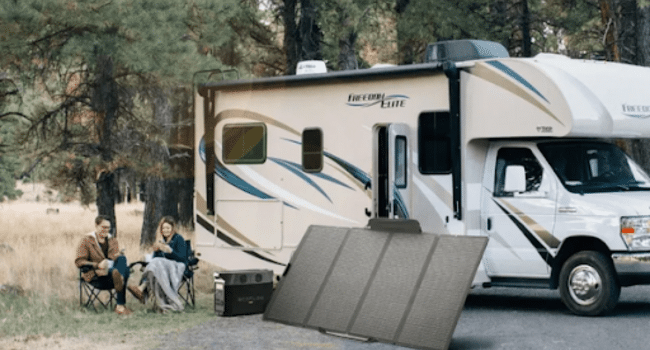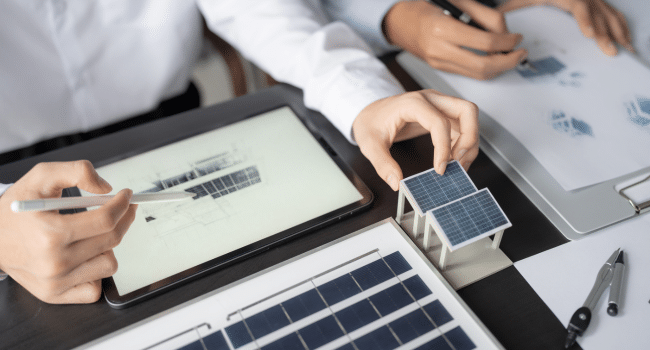Table of Contents
Homeowners, as climate change is speeding up, are looking for sustainable energy options that lead to an eco-friendly environment. Solar generators provide a clean, renewable way to produce power for homes that prioritize sustainability. Whereas conventional energy sources such as fossil fuels generate greenhouse gases, solar power systems do not; they are devoid of any damage to the environment. This technology has come a long way, becoming more cost-effective and beneficial for residential use, for a grid tie, or even off-grid power. For homeowners who are wondering about solar power, this post answers the vital questions about types of systems, storage, and usage options. In this authoritative guide, learn all you’ve got to know about solar generators, from the fundamentals of how they work to simple DIYs to get one started in your sustainable home!
For homeowners and builders prioritising sustainability from the ground up, exploring concepts like eco homes sunshine coast can expand your vision of what a truly green home looks like. These thoughtfully designed eco homes integrate energy-efficient architecture and sustainable materials, making them ideal spaces to adopt solar generators and other renewable systems that reduce environmental impact and operating costs. By combining smart home design with clean energy solutions, you’re contributing to a healthier planet while enjoying greater energy independence.
How Solar Generators Work: Core Components Explained
Pic of solar generators How Do Solar Generators Work? Solar generators work by a simple yet complex process of turning sunlight into electrical currents that can be used for powering various devices. At the core of these setups are photovoltaic panels – there are 2 types: monocrystalline panels, which are more efficient for their size, and the lower efficiency but cheaper polycrystalline panels. These panels are made up of silicon cells that convert sunlight into direct current (DC) electricity using the photovoltaic effect. The produced DC power is directed to an inverter, which is a necessary device that changes it into compatible AC electricity to be used for house appliances. The brains of the system is the charge controller, which controls how much voltage and current may go into and out of the batteries and panels, thus extending battery life and protecting them from overcharging. This system provides optimum power management and long battery life. At the heart of this system is the solar array, which generally contains solar panels to draw sunlight, a charge controller to handle the flow of power, a battery for storing surplus energy, and an inverter to transform the energy in a way that is usable in the home. This all-in-one solution operates all day during daylight hours to ensure uninterrupted, clean power for your gear while safeguarding your equipment with advanced energy management.

Grid-Connected vs Off-Grid Systems: Choosing Your Path
Grid-Tied Solar Solutions
Grid-tied solar systems link to the utility power grid, allowing for an uninterrupted power supply. If your system overproduces power, it flows back to the grid through net metering (running your meter backward) and lowers your utility bill. Such systems, however, rely on special grid-tie inverters with safety disconnects in order to synchronize with the utility power source. Grid-tied systems come with one important catch, however: They’ll leave you in the dark when the power goes out if you haven’t also installed a backup battery, as they’re designed to automatically power down to prevent backfeeding the grid and causing injury to utility workers.
Off-Grid System Essentials
Off-grid solar systems operate independently and do not rely on the grid for power. In these cases, there is a need to size the battery bank correctly to provide enough power during nighttime and cloudy days; commonly, a 2-3 day autonomy is considered. Nearly all off-grid systems also include a backup generator for those times when the sun doesn’t shine for a while. Off-grid systems are often used in remote cabins, mobile applications, or rural properties, and they tend to provide freedom from the utility grid at the ongoing cost of needing more involved maintenance and system management.
Factors such as location access, rates for local utilities, and the desire for energy independence will help inform your decision. Inverter-limited grid-tie with grid-voltage feedback also typically has a better return on investment due to net metering and lower upfront costs. Off-grid systems give you full energy autonomy while usually requiring bigger battery banks and more sophisticated system design. Hybrid systems give you the best of both worlds: you are connected to the grid with battery backup, but at a higher cost upfront. But then it all depends on a balance between your quest for energy independence, your budget, and your local energy infrastructure, so there’s no single answer.

Energy Storage Technologies for Solar Generators
Contemporary solar generator systems depend much on cutting-edge battery technologies that can save extra energy for use at night. Power manufacturers such as EcoFlow now offer these energy-dense, long-cycle-life, low-maintenance lithium-ion alternatives to lead-acid batteries. While lead-acid batteries are economical for minimum functionality, with lower service life and discharge depth, the cost over their lifespan can be higher. Storage size must be based on realistic daily energy usage patterns, including variations in daily patterns seasonally, how long backup is needed, etc. Power systems are generally for 1-2 days autonomy and are rated by their capacity in kilowatt hours (kWh). Temperature has an enormous effect on a battery’s performance and life and should be considered even at the time of installation, and such a decision must be implemented in a climate-controlled environment for longer life of the battery. Solid-state batteries and flow batteries are even more efficient and durable yet (though all of these are in the early stages of adoption). Further, advanced battery management systems track cell health, control charging cycles, and deliver peak performance under all environmental conditions to guarantee maximum system reliability and longevity.
Environmental Benefits: Reducing Your Carbon Footprint
By harnessing the power of solar energy, solar generators provide significant green benefits; the typical homeowner generates 3-4 tons of carbon-equivalent emissions, comparable to planting over 100 trees. This effect is further amplified when the full lifetime emissions analysis of solar systems is taken into account, where carbon loan for manufacturing is usually repaid within 2-3 years of operation. In addition to reducing carbon, solar generators repel harmful local pollutants from overseas oil, including sulfur dioxide and nitrogen oxides. These systems also exhibit significant benefits with regard to wildlife conservation as compared to traditional methods of generating power. While conventional power plants disturb the natural environment with mining, cooling water needs, and transmission infrastructure, solar power generators silently produce electricity without using water and are not limited to how much can be mined once built. The long-term ecological benefits are multiplied beyond short-term environmental positives – the developing of sustainable energy landscapes to sustain biodiversity. Solar installations can, in fact, be designed to augment native landscapes, offering shade to native plants and giving wildlife places to hide. And because they are modular, they can be integrated into existing structures, reducing the impact on new lands and protecting habitats while providing clean, renewable energy for years to come.
Implementing Solar Generators in Eco Homes: Step-by-Step
Step 1: Energy Needs Assessment
Start with a thorough energy audit so you know exactly how much power your home requires. Monitor your electricity use on a daily basis using your utility bills and smart meters, and adjust for seasonal cycles and peak demand times. Plan for the future; factor in potential add-ons, such as electric cars or home remodeling. Install power meters to trace large power-consuming equipment and power usage conditions. This information provides a solid basis for correctly sizing a system and avoiding costly oversizing or undersizing of elements.
Step 2: System Selection & Installation
Step back after determining your power requirements and identify whether you could benefit most from a grid-tie, off-grid, or hybrid system. Scale your solar array for both roof space, sunlight, and power needs. Comply with local permitting requirements, including homeowner’s association approval and building codes. Ensure that proper safety measures are taken during installation, which would at least have to be evaluated for roof safety and electrical compatibility. Go through the final checklist – check for grounding, for good weatherproofing, and make sure that your emergency disconnect is working!
The actual process itself must be well organized and professionally done! Begin with a comprehensive site analysis, including roof orientation, shading profiles, and structural condition. Develop a comprehensive equipment selection chart for panels, inverters, racking, and safety gear. Develop a manageable installation schedule with weather contingencies and permit duration factored in. Create a maintenance schedule that includes periodic panel cleaning and checking and testing your connections. System compatibility with local grid standards must be validated, and all safety standards must be met by professional installers. Record any specifications and warranty information for your reference, and plan regular tune-ups to keep your system running at its peak efficiency.
Embracing Sustainable Power for a Greener Future
Lightweight Portable Solar Generator: Solar power generators are definitely a focal point for emergency power backup and outdoor activity power supply. Utilizing ample solar power, these systems present homeowners with a very accessible and easy-to-manage path to a massive reduction in carbon footprint but also guarantee reliable energy independence. New products come frequently, newer, faster, smarter, and more affordable, promising to make capturing the sun’s rays more affordable than ever before. With climate change escalating, the decision to choose such solar generators is no longer just environmental but strategic for investing in our planet’s future. The immediate rewards of lesser utility bills are added to over a longer time by an effect on the natural environment, making solar sensible. Whether you want a grid-tied system for economic reasons or off-grid independence, a solar generator will provide a clear-cut method for sustainable living. Get started on the path to energy independence by analyzing your home’s solar potential and connecting with local solar installers. By going solar today, you help create a healthier, more sustainable future while also locking in your energy costs for years to come.
